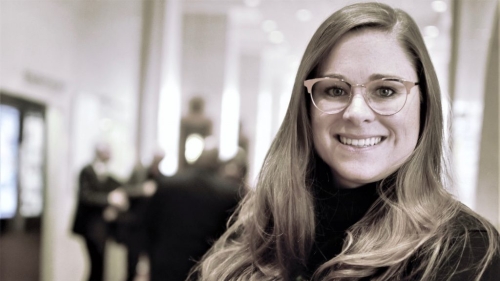
Chandler Patton Miranda was a doctoral candidate in NYU Steinhardt’s educational leadership program. She taught Schooling in Diverse Communities to pre-service teachers at Queens College, City University of New York.
Previously, she taught high school science on the southern United States border and in Colombia.
Chandler uses ethnographic methods to study school culture, community engagement, and leadership. Her dissertation, “Sanctuary Schooling: A Study of Educational Opportunity for Immigrant Newcomers,” focuses on sanctuary schooling as a culturally responsive practice for immigrant youth.
She worked with a mix-methods research team on a three-year study of schools for immigrant youth funded by the William T. Grant Foundation. She also collaborated with practicing educators and school leaders on action research projects investigating trauma-informed leadership and on-time graduation for immigrant students.
Chandler has published research in the Journal of Cases for Educational Leadership, Anthropology and Education Quarterly, and Theory into Practice. She will be presenting three papers at the forthcoming meeting of the American Education and Research Association, April 5-9, 2019 in Toronto, Ontario, Canada.
Your dissertation focuses on educational opportunities for recently arrived immigrant teenagers. What brought you to this topic?
I worked as a teacher on the border of Texas and Mexico in a very economically depressed community. Then I moved to Barranquilla, Colombia to teach at an elite private school and did my master’s research in a community of displaced people. These experiences made me realize how much socioeconomic status and public policy impact people’s lives. Schools are blamed for so much they cannot control. Still, I saw how the schools in which I worked shaped students’ world views in both positive and negative ways. This drove my interest in school culture and leadership.
My interest in immigrant teenagers specifically is rooted in many of my own experiences. Living abroad, teaching students from a diversity of backgrounds, learning Spanish as an adult, moving back to the U.S. with my immigrant husband; all of these experiences made me questions things like how a culture rooted in monolingualism influences how language policies in schools play out. There was so much literature on young children, but much less on children who come to the country for high school.
What is “sanctuary schooling” and can you speak to its potential for educating diverse student populations?
I use the term sanctuary schooling to holistically describe the findings from my study. Recognizing that immigrant students need far more from schools and policies than English instruction is the foundation of sanctuary schooling as a culturally-responsive and capabilities-enhancing approach to educating immigrant youth.
Sanctuary schooling describes how the school where my study took place created a culture of belonging, adopted appropriate accountability policies, and cultivated a responsive teacher corps. The teacher corp created opportunities for immigrant students to learn and stay in school despite an increasingly hostile political context.
You are working on a project about “trauma-informed” leadership and its role in on-time graduation for immigrant students. Can you tell me about this?
I am working with the principal of the school where I did my ethnographic research on a study of her leadership practices between 2016 and 2018. The election of Donald Trump had immediate and lasting impacts on immigrant communities and the schools that serve them. We are looking at her weekly email to teachers, our interviews over that time period, and documents from professional developments and meetings to reflect on how her practice changed in response to the increasingly hostile political environment. Specifically, we are looking at how she identified and responded to how the political environment was traumatizing students and teachers as they faced deportations, family separations, detentions, and an increasing level of fear. I am really interested in helping school leaders explore problems of practice in their schools, and this project is teaching me so much about what ethical, reliable, and useful practitioner research looks like. We are presenting our work at AERA and I am really looking forward to it!
You are presenting three papers at the AERA conference. You’ve written a dissertation, as well. What accounts for your tremendous output?
I really depend on collaboration for both accountability and creativity. I work with both people I can learn from and people I can teach. There are times I will leave a meeting with a mentor and then use what I learned with my students or a colleague I am writing with. I am fortunate that I get to work on projects that excite me and that I have had such amazing mentors. I am also very lucky to work with Colleen Larson who is an amazing advisor and teacher. She has read every word of every draft (ten and counting) of my dissertation. She really pushes me to write well and write often and she meets with me often to hold me accountable. I think having an advisor who really cares about you is so important in this process.
How do you manage your academic career with motherhood? Are there any tips you can pass on for other graduate students?
I am still learning every day how to be a good mom and do good work. The best piece of advice I received during my pregnancy was from my sister-in-law. She told me to accept help, and I did, and I do! (It was really hard to accept offers of help but I am so glad I did.) While I was finishing my dissertation with a newborn, my community of people fed me, made sure I showered, got me out of the house, and kept me mentally and physically healthy. I could not have done any of this without an incredibly supportive partner and my friends and family.
